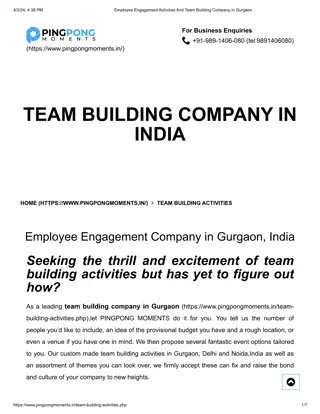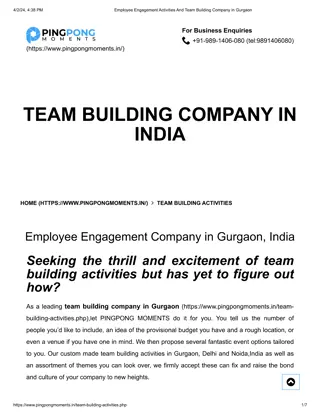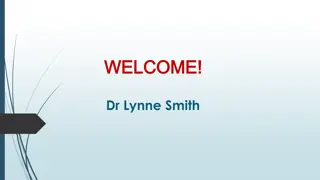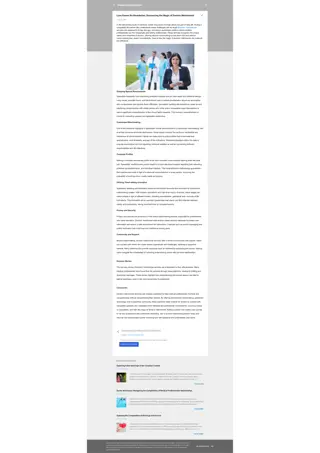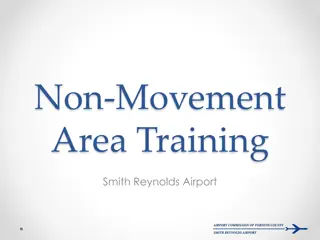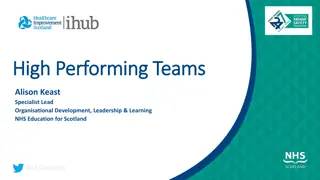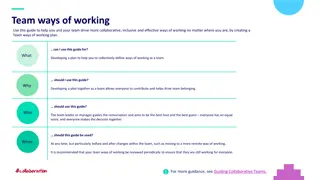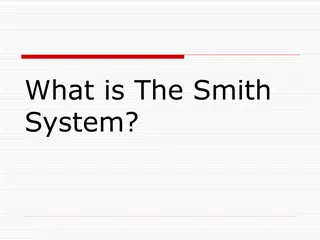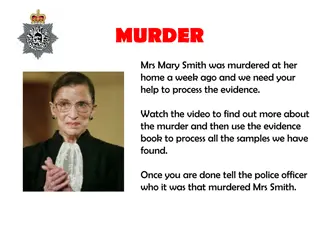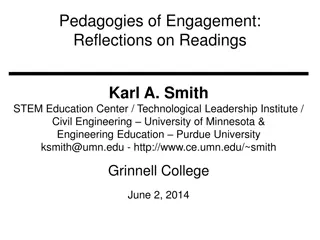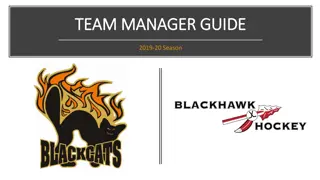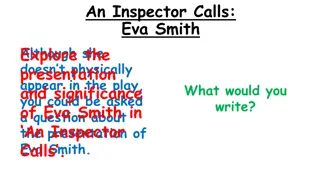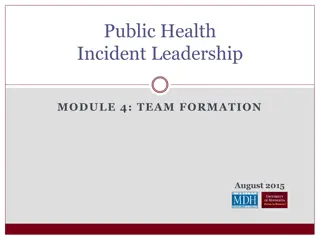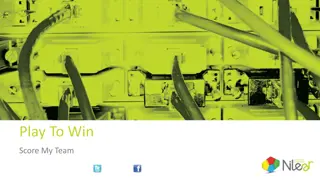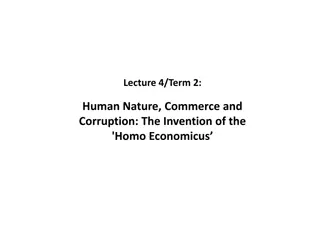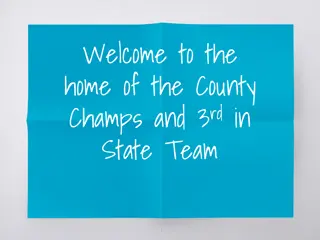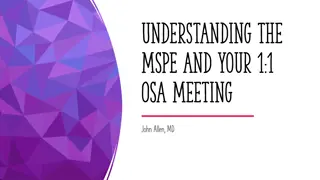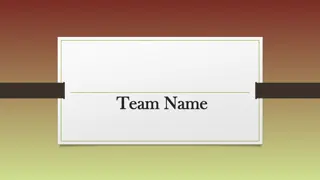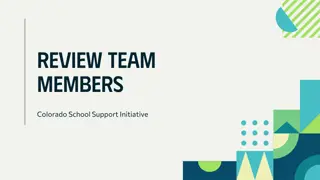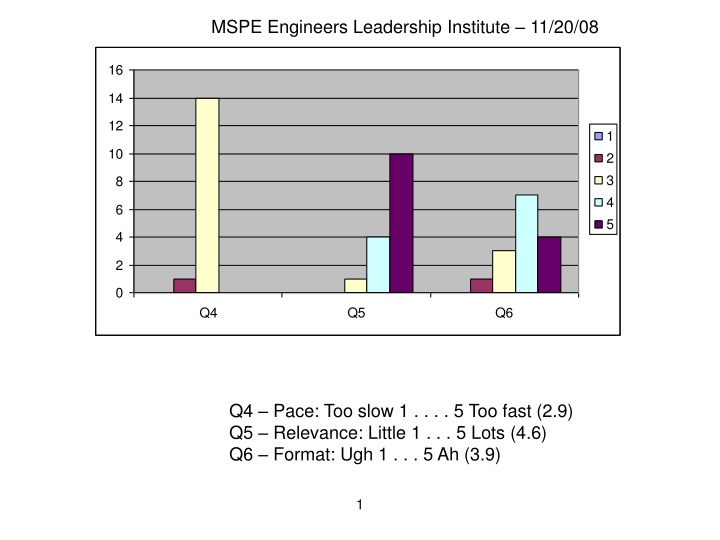
Effective Teamwork and Leadership in Engineering: Strategies and Insights
Explore the dynamics of effective teamwork and leadership in engineering through insightful discussions on project teams, professional skills, team failure, and the characteristics of high-performing teams. Gain valuable knowledge from renowned experts to enhance your engineering practices.
Download Presentation

Please find below an Image/Link to download the presentation.
The content on the website is provided AS IS for your information and personal use only. It may not be sold, licensed, or shared on other websites without obtaining consent from the author. If you encounter any issues during the download, it is possible that the publisher has removed the file from their server.
You are allowed to download the files provided on this website for personal or commercial use, subject to the condition that they are used lawfully. All files are the property of their respective owners.
The content on the website is provided AS IS for your information and personal use only. It may not be sold, licensed, or shared on other websites without obtaining consent from the author.
E N D
Presentation Transcript
MSPE Engineers Leadership Institute 11/20/08 16 14 12 1 2 3 4 5 10 8 6 4 2 0 Q4 Q5 Q6 Q4 Pace: Too slow 1 . . . . 5 Too fast (2.9) Q5 Relevance: Little 1 . . . 5 Lots (4.6) Q6 Format: Ugh 1 . . . 5 Ah (3.9) 1
Leading Project Teams Teamwork and Leadership Karl A. Smith Purdue University/ University of Minnesota ksmith@umn.edu Engineers Leadership Institute Minnesota Society for Professional Engineers November 18, 2011
Design team failure is usually due to failed team dynamics (Leifer, Koseff & Lenshow, 1995). It s the soft stuff that s hard, the hard stuff is easy (Doug Wilde, quoted in Leifer, 1997) Professional Skills (Shuman, L., Besterfield-Sacre, M., and McGourty, J., The ABET Professional Skills-Can They Be Taught? Can They Be Assessed? Journal of Engineering Education, Vo. 94, No. 1, 2005, pp. 41 55.)
http://www.aacu.org/advocacy/leap/documents/Re8097abcombined.pdfhttp://www.aacu.org/advocacy/leap/documents/Re8097abcombined.pdf 4
Top Three Main Engineering Work Activities Civil/Architectural Management 45% Design 39% Computer applications 20% Engineering Total Design 36% Computer applications 31% Management 29% Burton, L., Parker, L, & LeBold, W. 1998. U.S. engineering career trends. ASEE Prism, 7(9), 18-21. 5
Teamwork High-performing Cooperative Group PERFORMANCE LEVEL Cooperative Group Individual Members Traditional Group TYPE OF GROUP Pseudo-group 6
A team is a small number of people with complementary skills who are committed to a common purpose, performance goals, and approach for which they hold themselves mutually accountable SMALL NUMBER COMPLEMENTARY SKILLS COMMON PURPOSE & PERFORMANCE GOALS COMMON APPROACH MUTUAL ACCOUNTABILITY --Katzenbach & Smith (1993) The Wisdom of Teams
Six Basic Principles of Team Discipline ! Keep team membership small ! Ensure that members have complimentary skills ! Develop a common purpose ! Set common goals ! Establish a commonly agreed upon working approach ! Integrate mutual and individual accountability --Katzenbach & Smith (2001) The Discipline of Teams 9
10 http://www.ce.umn.edu/~smith/docs/Smith-CL%20Handout%2008.pdf
Teamwork Skills Communication Listening and Persuading Decision Making Conflict Management Leadership Trust and Loyalty 11
Group Processing Plus/Delta Format Delta ( ) Plus (+) Things Group Could Improve Things That Group Did Well
Team Charter Team name, membership, and roles Team Mission Statement Anticipated results (goals) Specific tactical objectives Ground rules/Guiding principles for team participation Shared expectations/aspirations
Code of Cooperation EVERY member is responsible for the team s progress and success. Attend all team meetings and be on time. Come prepared. Carry out assignments on schedule. Listen to and show respect for the contributions of other members; be an active listener. CONSTRUCTIVELY criticize ideas, not persons. Resolve conflicts constructively, Pay attention, avoid disruptive behavior. Avoid disruptive side conversations. Only one person speaks at a time. Everyone participates, no one dominates. Be succinct, avoid long anecdotes and examples. No rank in the room. Respect those not present. Ask questions when you do not understand. Attend to your personal comfort needs at any time but minimize team disruption. HAVE FUN!! ? Adapted from Boeing Aircraft Group Team Member Training Manual
Ten Commandments: An Affective Code of Cooperation Help each other be right, not wrong. Look for ways to make new ideas work, not for reasons they won't. If in doubt, check it out! Don't make negative assumptions about each other. Help each other win, and take pride in each other's victories. Speak positively about each other and about your organization at every opportunity. Maintain a positive mental attitude no matter what the circumstances. Act with initiative and courage, as if it all depends on you. Do everything with enthusiasm; it's contagious. Whatever you want; give it away. Don't lose faith. Have fun Ford Motor Company 16
Leadership Characteristics of Admired Leaders (people you know and have worked with) Take 2 minutes and list the characteristics that come to mind for leaders you admire 17
James M. Kouzes & Barry Z. Posner. 1993. Credibility: How leaders gain and lose it, why people demand it. San Francisco: Jossey-Bass.
Distributed Actions Approach to Leadership Leadership is any action that helps a group achieve its goals AND maintain cooperative relationships among members. Task AND Maintenance
Collins Level 5 Leadership Level 5 Level 5 Executive Builds enduring greatness through a paradoxical combination of personal humility plus professional will Level 4 Effective Leader Catalyzes commitment to and vigorous pursuit of a clear and compelling vision; stimulates the group to high performance standards Level 3 Competent Manager Organizes people and resource toward the effective and efficient pursuit of predetermined objectives Level 2 Contributing Team Member Level 1 Highly Capable Individual 20
Collins Good to Great & Built to Last Check out jimcollins.com for discussion questions to deepen understanding of: Level 5 Leadership First Who Confront the Brutal Facts Hedgehog Concept (the Three Circles) What it can be best at, How its economics work best, What ignites its people s passions. Culture of Discipline Technology Accelerators 21
Nobody in Charge by Harlan Cleveland Leadership for the Management of Complexity A lively intellectual curiosity because everything is related to everything else A genuine interest in what other people think and why they think that way A feeling of responsibility for envisioning a future that s different from straight-line project of the present A hunch that most risks are there not to be avoided but to be taken A mindset that crises are normal, tensions can be promising, and complexity is fun A realization that paranoia and self-pity are reserved for people who don t want to be leaders A sense of personal responsibility for the general outcome of your efforts A quality of unwarranted optimism 22
New Leadership Competencies The Leader's Handbook (Scholtes, 1998) 1. The ability to think in terms of systems and knowing how to lead systems. 2. The ability to understand the variability of work in planning and problem solving. 3. Understanding how we learn, develop, and improve; leading true learning and improvement. 4. Understanding people and why they behave as they do. 5. Understanding the interaction and interdependence between systems, variability, learning, and human behavior; knowing how each affects the others. 6. Giving vision, meaning, direction, and focus to the organization. 23
The Seven Habits of Highly Effective People (Covey, 1989) Be Pro-Active: Take the initiative and the responsibility to make things happen. Begin With an End in Mind: Start with a clear destination to understand where you are now, where you're going, and what you value most. Put First Things First: Manage yourself. Organize and execute around priorities. Think Win/Win: See life as a cooperative, not a competitive arena where success is not achieved at the expense or exclusion of the success of others. Seek First to Understand: Understand then be understood to build the skills of empathic listening that inspires openness and trust. Synergize: Apply the principles of cooperative creativity and value differences. Renewal: Preserving and enhancing your greatest asset, yourself, by renewing the physical, spiritual, mental and social/emotional dimensions of your nature.

